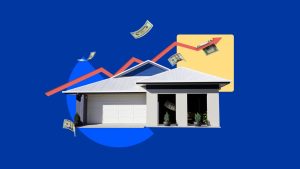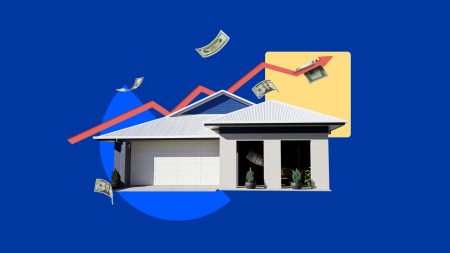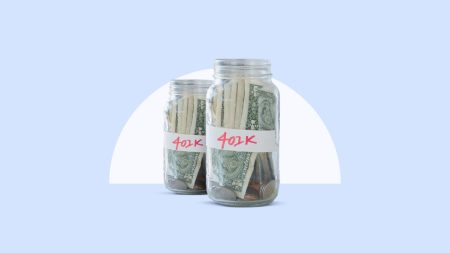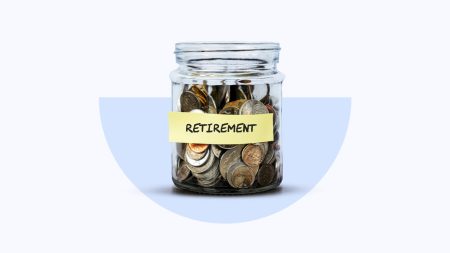Key takeaways
- One of the most common mortgage myths is that refinancing is free. However, you’ll need to pay fees, usually ranging from 2 percent to 5 percent of the mortgage principal amount.
- No additional lien is placed on your home when you refinance your mortgage, but you will need to undergo a credit check.
- You can refinance your home more than once, but you typically need around 20 percent equity in your home.
Despite the rise in interest rates in the last few years, refinancing still may make sense for some homeowners. If you’re a first-time refinancer, though, you might have a lot of questions about what the process is like — and might also have picked up some misinformation. Let’s dispel some common myths about mortgage refinancing.
Myth 1: Refinancing is cost-free
Afraid not. Homeowners usually hear a lot about how much they can save by refinancing their mortgage, but they rarely hear about the upfront cost of doing so. It’s true that you don’t need to make a down payment. But a refinance is still a mortgage, and — like your first home loan — it carries closing costs.
These fees can amount to as much as 2 to 5 percent of the (new) loan principal. For example, if your fees are 3 percent on a $250,000 mortgage, then your upfront payment is $7,500. Many lenders will allow you to roll those costs into your new loan, which will increase the principal you must repay
Myth 2: The interest rate is the most important factor
For many homeowners, the name of the game is to get the lowest interest rate possible. However, the loan term is another factor borrowers should consider before refinancing because it can impact how much you will actually save.
When you refinance to a loan with the same term, you reset the payment clock, says Michele Sine, portfolio manager and senior wealth advisor at ImpactAdvisor. For instance, homeowners who have been paying their 30-year mortgage for 10 years will reset to zero when they refinance to another 30-year loan. This added time (that’s 120 additional monthly payments) costs money as the initial payments mostly cover interest to the service provider.
“It’s an uneven playing field when it comes to payments. In short, the bank always wins because they get their money first,” says Sine.
Homeowners who want to save money over the life of their loan can refinance to a loan with a lower rate and shorter term (such as going from a 30-year fixed-rate mortgage to a 15-year fixed-rate mortgage). Or, they can make extra monthly payments to repay the loan faster.
Myth 3: A refinance will affect selling the house
Refinancing your mortgage doesn’t put an additional lien on your home. It just swaps out the primary lien on the home with a new one. This means that the refinance doesn’t have an impact on any home sale or dirty your title in any way.
Keep in mind: Though they are technically claims on the property, mortgages aren’t as negative as other sorts of liens, because they don’t involve any dispute. Plus, it’s assumed they’ll be settled with the proceeds from the home sale.
Refinancing is strictly based on your ability to pay back the loan, as evidenced by your credit and employment history. That means it wouldn’t impose any restrictions on future sales any more than your original mortgage did.
The confusion often arises due to two other types of debt that use your house as collateral: home equity loans (aka second mortgages) and home equity lines of credit (HELOCs). People who have a primary mortgage often take these out when they need funding for something, such as home improvements or repairs. In those cases, it’s true you wouldn’t be able to sell the home until you paid back those loans or immediately settled them at the closing.
Myth 4: You won’t need a credit check
It might come as a surprise that lenders require a credit check for refinancing a home loan. If you’ve been repaying the loan on time, why should lenders want to recheck your credit? Because, to them, it’s a new loan, so they must vet the borrower for the current state of their finances.
“Generally, homeowners with credit scores over 760 will qualify for the best refinancing rates,” says Leslie Tayne, founder and head attorney at Tayne Law Group in New York’s Westchester County. “Lenders will likely be looking for your debt-to-income ratio (DTI) to be less than 36 percent to ensure that you’re not carrying too much debt and can adequately pay back the loan. Some homeowners may be surprised to find out they don’t qualify.”
So, before you apply for refinancing, check your credit score and calculate your debt-to-income ratio. Since the objective of refinancing is to get the best rate, you’ll want to make sure your financial picture is good enough to get it, or at least cut your current rate significantly.
Myth 5: You can only refinance your mortgage once
Another mortgage myth is that you can only refinance your mortgage once. Actually, there’s no limit to how often you can refinance your mortgage. However, the fees are substantial, so it pays to ensure each refinancing makes sense. Use a refinance calculator to see if this is a route you want to take, particularly if you refinanced your home loan in the past few years.
And you do need to pause between applications. “In reality, you can refinance your mortgage as many times as you want, but many lenders look for a ‘seasoning’ period, or an amount of time in between refinances before they’re comfortable approving another,” says Tayne. “Additionally, if you have a prepayment penalty on your loan, you could be charged if you attempt to refinance again.”
Keep in mind: Few mortgages come with prepayment penalties these days, but it pays to ask before you settle on a refinance lender.
FAQs about mortgage refinance
-
When you refinance, you’re getting a whole new loan, which means you’ll get new loan terms with a new interest rate. So, no, you cannot keep the same interest rate when you refinance. Before you commit to a lender, be sure to compare today’s refinance rates so you can be sure you get the best loan possible.
-
Refinance rates tend to run higher than purchase rates. Two reasons for this are that lenders not only prioritize mortgages but they also account for the added risk that comes with refinancing. However, factors like your credit score and assets will determine the rate you receive.
-
With a cash-out refinance, you can tap your home equity to get a lump sum of cash to use elsewhere. (You’ll also get a brand new, larger mortgage to repay.) Typically, you must maintain at least 20 percent equity in your home when you choose a cash-out refinance.
-
Generally, you need to have at least 20 percent equity to refinance, but this number varies based on the lender and type of refinance you choose. It is possible to refinance with less equity, but you will likely face higher interest rates and fees.
-
Typically, refinancing your mortgage has meant starting your loan term over, which means a longer repayment period (unless you opt for a shorter term, such as a 15-year mortgage). These days, however, you can find lenders who will let you choose custom loan terms. This means you can choose loan terms that fit your original length of your mortgage, as long as you can afford the monthly payment.
-
No, not all lenders offer the same rate, which is why it’s so important to shop around. Even a percentage point difference can add up to a big savings over the years. And be sure to compare not just interest rates, but annual percentage rates (APRs) — which reflect the lender’s fees and thus the real cost of the loan. That’s where really significant differences can appear.
-
It’s another myth that you can never apply for a refinance again if you are rejected. If your credit score, credit history and other aspects of your finances (debts, income) have changed for the better since your denial, it may be a good idea to reapply. And at any time, you can always try a different lender or a different type of lender.
Additional reporting by Emma Woodward
Read the full article here










